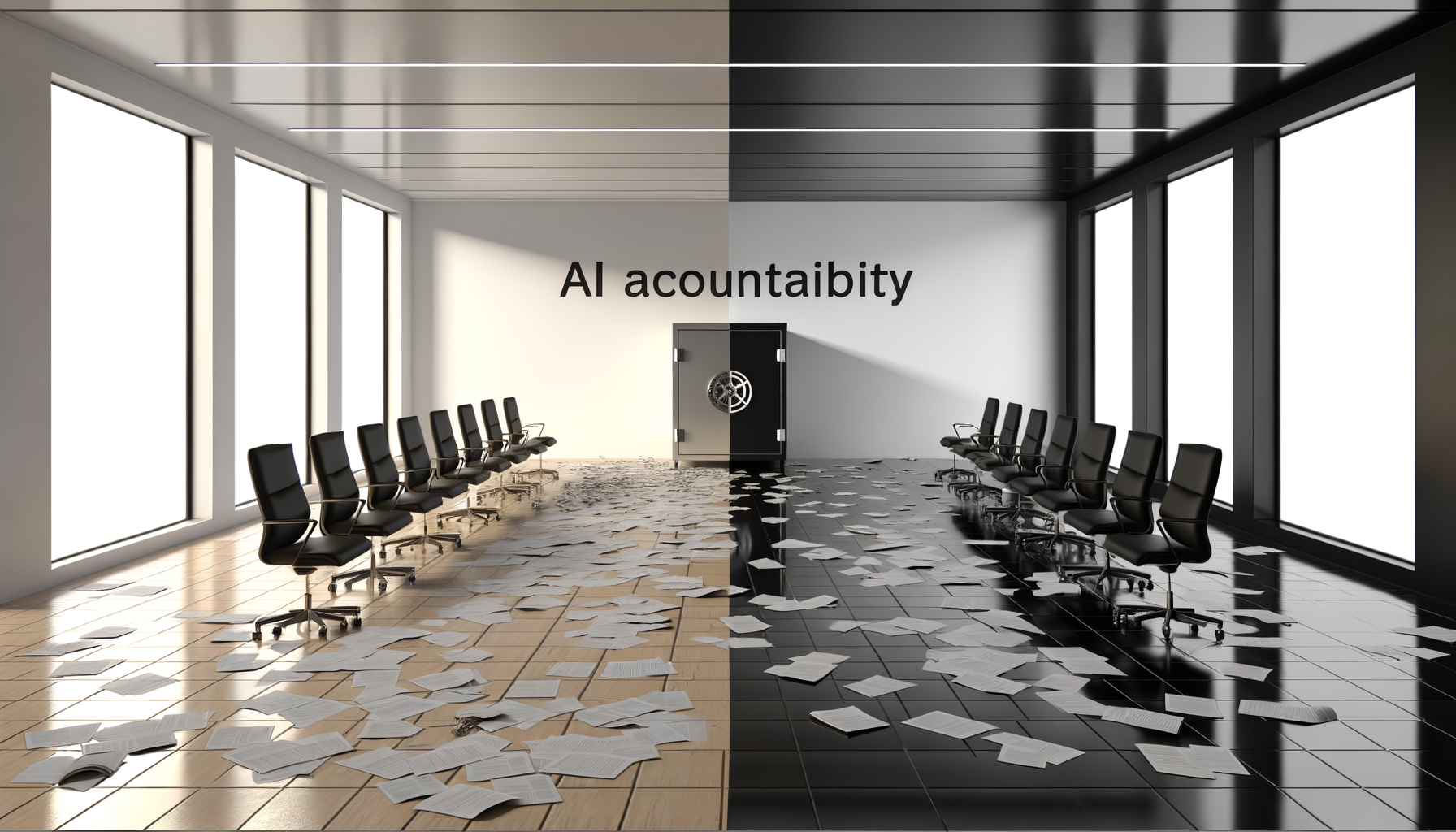What if a single new AI law could flip the script on your company’s exposure to hidden AI risks—overnight? Are you certain your governance strategy is ready for the next $18M mistake?
California’s Frontier AI Act: The Legal Earthquake Enterprises Can’t Afford to Ignore
In a legislative climate packed with tech promises and regulatory delays, California’s freshly minted Transparency in Frontier AI Act is not just another compliance checkbox. It shines a merciless spotlight on the rare air—where innovation, risk, and real legal exposure converge for any organization leveraging AI at scale. The Act mandates rigorous, standardized AI safety disclosures for high-impact (“frontier”) AI systems, with potential financial and reputational implications that are only just coming into focus.
The Stakes: Why $18M Isn’t an Outlier—It’s a Signal
For most boards, the figure $18M is more than a rounding error—it’s a potential career-ending, strategy-derailing liability. And yet, that number could prove conservative for many, given the new civil penalties and misreporting exposures baked into the Act. Failure to comply or provide adequate transparency could open the floodgates for steep regulatory fines and—more damagingly—post-crisis lawsuits where disclosure lapses are at the center of the case. The era of hand-wavy AI assurance is over. The cost of ‘good enough’ has just become catastrophic.
The Crisis Beneath the Surface: AI Safety Disclosure as Enterprise Weak Link
Let’s cut through the fog: Most enterprise AI governance frameworks were not architected with public disclosure or post-market risk traceability in mind. There’s a reason—even at Fortune 100 companies—internal security assessments, robustness tests, and model documentation rarely align with public reporting standards. California’s new law finally brings this governance gap to light, demanding a credible answer to a question that used to be rhetorical: Just how auditable, explainable, and accountable is your mission-critical AI?
The hidden governance crisis isn’t that AI systems might fail—but that enterprises might not be able to prove they tried to prevent failure, when regulators, investors, or litigators come knocking.
What the Law Mandates—And Why Most Are Nowhere Near Ready
- Standardized AI Safety Disclosures: Detailed documentation of safety testing, risk mitigation, and incident response protocols must be made available, not just to regulators, but potentially to business partners and the public.
- Incident Reporting Obligations: Any safety failure or misuse of frontier AI systems triggers mandatory reporting, with timelines and content defined by the state.
- Independent Audit Facilitation: Organizations must be audit-ready on demand, able to demonstrate, with evidence, the soundness of their deployed or market-facing AI models.
For most, this is not a quick dashboard fix: it’s a multi-system architecture question cutting across data pipelines, model management, record-keeping, and external accountability.
Why This Could Become a National (or Global) Domino
California is not acting in isolation. With Brussels and Washington weighing similar disclosure-centric frameworks in upcoming EU AI Act enforcement and possible federal U.S. regulation, the Golden State is once again providing a blueprint for legislators worldwide. The expectation: If you build or operate transformative AI systems, you will be subject to stringent transparency, traceability, and post-market accountability requirements—no matter your headquarters location. Enterprises now face the real risk of constantly ‘playing catch-up’ as the regulatory wave outpaces their internal risk infrastructure, one state or country at a time.
The Real Risks: It’s Not Just About Fines—It’s Enterprise Survivability
- Loss of Contracts and Market Trust: Disclosure requirements mean that any AI failure—or attempt to conceal one—could result in termination of business relationships, not just regulatory penalties.
- Litigation Exposure: Plaintiffs’ lawyers are laser-focused on disclosure lapses as evidence of systemic negligence—a risk multiplier for any enterprise with large customer-facing AI deployments.
- Shareholder and Investor Backlash: Failure to comply, or even the perception of governance window-dressing, can impact share price and catalyze activist action.
- Sustained Reputational Damage: In a world where trust in AI is already thin, mishandled transparency can turn a single incident into a multi-year crisis.
What Frontier AI Transparency Looks Like—And Where Most Are Falling Short
Ask yourself: If your company had to publicize its AI documentation, safety protocols, and post-incident communications tomorrow, would the picture inspire confidence—or concern?
- Most organizations still treat AI assurance as an internal control function, not as a proactive governance tool with external, legal, and societal exposure.
- Key model decisions, limitations, and known failure modes are frequently under-documented or siloed within data science teams.
- Many ‘incident response’ policies focus on technical remediation, not on external communication, documentation, or regulatory engagement—now a major governance gap.
- There is little standardization of what ‘sufficient’ transparency means—leaving organizations vulnerable to shifting legal interpretations and sudden regulatory crackdowns.
The New Baseline: Transparent, Defensible AI Risk Governance
Organizations now face a stark choice: retroactively patch together a Frankenstein compliance program or fundamentally re-architect for traceability, auditable controls, and radical transparency. The baseline has shifted. Effective AI risk governance now requires the ability to:
- Map every deployed frontier AI system with documentation of risk assessments, limitations, and intended use cases
- Run regular, results-driven safety and robustness tests—with reporting ready at a moment’s notice
- Establish incident response “war rooms” that include legal, PR, and compliance—not just engineers
- Engage third-party auditor relationships to validate and test AI system claims before crises emerge
- Deploy dashboards and reporting protocols that are designed for external, hostile scrutiny
How to Stress-Test Your AI Risk Governance for the New Era
Rapid Self-Diagnosis: The 6-Question Executive Audit
- Can you provide, today, a comprehensive map of all high-risk AI systems deployed in your enterprise, with associated risk assessments?
- Are standardized procedures in place for real-time documentation of training data, performance metrics, and model limitations?
- Do you have incident response playbooks that include compliance, legal, and communications workflows—not just technical fix lists?
- Are external audits of your AI safety claims underway—and can you provide evidence of past tests and remediations?
- Is your executive team briefed and prepared to respond publicly if an AI safety incident or disclosure failure occurs?
- What is your protocol for cross-jurisdictional regulatory reporting if similar laws appear in the EU or other U.S. states?
If the answer to any is ‘unclear’—you have a governance gap, and California’s new framework means you’re now on notice.
Closing the Gap: First Steps for Enterprise Leaders
- Don’t wait for an enforcement letter—begin external-grade documentation and risk-mapping immediately.
- Break down silos: Risk, IT, legal, and communications must align on protocols for disclosure, reporting, and incident strategy.
- Treat transparency as a competitive asset, not a compliance tax: Companies that can credibly demonstrate their AI is safe, well-governed, and responsibly disclosed will enjoy market access others lose.
- Invest in stress-testing: Simulate “worst day” regulatory requests or breach reports to identify and close process gaps before they become tomorrow’s headlines.
The Bottom Line: The Era of AI Black Boxes Is Ending
The Transparency in Frontier AI Act is a shot across the bow, not an isolated salvo. For enterprise AI leaders, this is not just a legal challenge—it’s an existential governance reckoning. Disclosure is coming, everywhere, and for the first time, regulators are not just talking—they are mandating visibility, accountability, and evidence. Fail to adapt, and your next AI innovation could also be your headline crisis.
The organizations that don’t radically re-architect for AI safety transparency today will be tomorrow’s case studies in governance failure.





